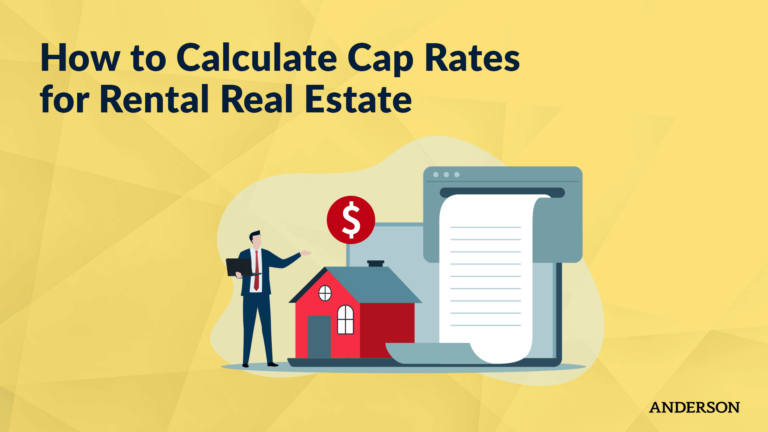How do Taxes in Retirement Work?
In this episode of Toni Talks, enrolled agent (EA) Toni Covey is joined by special guests Eliot Thomas and Amanda Wynalda, both attorneys, to discuss taxes in retirement.
Updated January 26, 2021
Before we can even begin discussing how income is taxed in retirement, we have to first cover retirement planning. Here at Anderson, we look at retirement planning not only as a way to plan for your golden years, but also as a tax planning tool. So, we’re either looking at deferring income or putting income into a vehicle that will grow tax-free.
Roth vs. Traditional Retirement Accounts
The traditional retirement account allows a ballpark of $7,000 a year in contributions, depending on your age, and is funded with pre-tax dollars. You can then deduct those contributions from your taxable income in the year in which the contributions made. At retirement, when you withdraw those funds, you’ll then owe taxes on them at whatever tax bracket applies to you at that time.
Roth retirement accounts, on the other hand, allow you to contribute with after-tax dollars. Since you’ve already paid the taxes on the contributions, the growth in the account will accumulate tax-free, allowing you to withdraw without owing taxes during your retirement years (generally speaking).
One caveat to Roth accounts is that there’s never certainty about what future tax rates may be. So, you don’t know what the tax rates in the future will be, but you know what they are now, and choose to pay the taxes now rather than later.
Roth accounts have restrictions, however. For instance, the Five-Year Rule will apply a 10% penalty to any withdrawals from a Roth account that is less than five years old. Furthermore, as with all retirement accounts, you must be aged 59.5 or older to withdraw without penalty.
IRAs vs. QRPs
Now, let’s turn to IRAs (individual retirement accounts) and QRPs (qualified retirement plans). These are two distinct things. An IRA can only be held by an individual. A QRP, on the other hand, is an employer-sponsored plan. For both accounts, contributions can only be made with earned income, so much so in a QRP that the contribution caps are based on said earned income.
For IRAs, the annual contribution cap is $6,000. For QRPs, it’s $57,000 or up to 25% of your compensation. If you’re over the age of 50, you have an additional $6,000 added to that annual contribution limit to “catch up.”
Furthermore, in addition to contribution limits, there are also income limitations for utilizing Roth accounts. Of course, there are backdoor ways to make that happen, but there are alternative options to achieve similar ends, such as IULs (indexed universal life insurance policies). If you’re interested in IULs, I highly encourage you to schedule a complimentary Strategy Session because there are a lot of little intricacies that must be worked out at the individual level with this tool.
Taxes on Retirement Account Distributions
How retirement account distributions are taxed depends entirely upon what type of account it is. If it’s a Roth account, then you can take those distributions without a tax consequence.
With traditional retirement accounts and IRAs, if you do not take a deduction for the contributions or for part of the contributions due to income limits, then whatever was not deducted goes to your basis in the account. This is something you track on Form 8606, the basis of your non-deductible IRA. Any distributions made in excess of your account basis will then be taxable income to you in retirement.
Taxable distributions will then be taxed at whatever your ordinary income tax rate is at that time. Of course, this is something that cannot be predicted because it depends on your income as well as the tax rates at that time, which are set by Congress.
Taxes on Social Security Income
In retirement, you may also be looking at things like Social Security income, which can be taxable income under certain circumstances. If you’re at or below the thresholds of $25,000 for single filers or $34,000 for married joint-filers, then 50% of your Social Security benefits are taxable. If your income is higher than that — at or above $34,000 for single filers or $44,000 for married joint-filers — then 85% of your Social Security benefits are taxable. In short, Social Security income is taxed, but only partially, dependent on income levels.
Required Minimum Distributions (RMDs)
Recently, the SECURE Act increased the age threshold at which one must begin taking required distributions from their retirement account. Previously, RMDs applied at the age of 70.5; however, now, that has been increased to 72. Required minimum distributions don’t have to be taken monthly; they can be taken as a lump sum.
The Takeaway
Ultimately, retirement and tax planning go hand-in-hand and are very much individualized endeavors. There is no one “right way” to plan for one’s retirement or tax bill — everything comes down to facts and circumstances.
If you’d like to discuss your retirement or tax planning with a certified Senior Advisor, schedule a complimentary Strategy Session now. On the call, you’ll discuss the best retirement planning and tax mitigating vehicles for your personal situation, and build out a plan to achieve the retirement you hope for. You can schedule online or by calling 888.871.8535.
Free Strategy Session with an Anderson Advisor
Receive a detailed risk assessment to assist in lowering problem areas that could wipe out all of your assets with one wrong move. Speak with an Anderson Professional Advisor to get your FREE Strategy Session.
Limited-Time Offer: ($750 value.)











